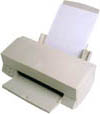The Direct Object
Recognize a direct object when you find one.
A direct object will follow a transitive verb (a type of action verb). Direct objects can be nouns, pronouns, phrases, or clauses. If you can identify the subject and the verb in a sentence, then finding the direct object—if one exists—is easy.
Just remember this simple formula:
Subject + Verb + what? or who? = Direct Object
Here are examples of the formula in action:
Zippy and Maurice played soccer with a grapefruit pulled from a backyard tree.
Zippy, Maurice = subjects; played = verb. Zippy and Maurice played what? Soccer = direct object.
Zippy accidentally kicked Maurice in the shin.
Zippy = subject; kicked = verb. Zippy kicked who? Maurice = direct object.
Sometimes direct objects are single words like soccer and Maurice; other times they are phrases or clauses. The formula nevertheless works the same:
Selena hates biting her fingernails.
Selena = subject; hates = verb. Selena hates what? Biting her fingernails (a gerund phrase) = direct object.
Even worse, Selena dreads when Mom lectures her about hand care.
Selena = subject; dreads = verb. Selena dreads what? When Mom lectures her about hand care (a subordinate clause) = direct object.
Direct objects can also follow verbals—infinitives, gerunds, and participles. Use this abbreviated version of the formula:
Verbal + what? or who? = Direct Object
Here are examples:
To see the magnified blood cells, Gus squinted into the microscope on the lab table.
To see = infinitive. To see what? Magnified blood cells = direct object.
Gus bought contact lenses because he wanted to see the beautiful Miranda, his lab partner, more clearly.
To see = infinitive. To see who? The beautiful Miranda = direct object.
Dragging her seventy-five pound German shepherd through the door is Roseanne's least favorite part of going to the vet.
Dragging = gerund. Dragging what? Her seventy-five pound German shepherd = direct object.
Heaping his plate with fried chicken, Clyde winked at Delores, the cook.
Heaping = participle. Heaping what? His plate = direct object.
Do not confuse a direct object with a subject complement.
Only action verbs can have direct objects. If the verb is linking, then the word that answers the what? or who? question is a subject complement.
Compare these two sentences:
The space alien from the planet Zortek accidentally locked his keys in his spaceship.
Alien = subject; locked = action verb. The space alien locked what? His keys = direct object.
The space alien was happy to find a spare key taped under the wing.
Alien = subject; was = linking verb. The space alien was what? Happy = subject complement.
Don't use subject pronouns as direct objects.
The chart below contains subject and object pronouns. Because direct objects are objects, always use the objective form of the pronoun.
Subject Pronouns Object Pronouns I
we
you
he, she, it
they
whome
us
you
him, her, it
them
whomRead these examples:
After I give my dog Oreo a scoop of peanut butter, she always kisses me with her sticky tongue.
She = subject; kisses = verb. She kisses who? Me = direct object.
Because Jo has skipped Professor Duncan's class five times in a row, she ducks out of sight whenever she spots him on campus.
She = subject; spots = verb. She spots who? Him = direct object.
Because David was always eating her food, Theresa sneaked corn chips and candy bars into her room and hid them in the clothes hamper.
Theresa = subject; hid = verb. Theresa hid what? Them = direct object.
©1997 - 2024 by Robin
L. Simmons
All Rights Reserved.
